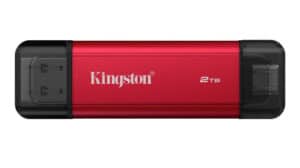iPhone 15 USB-C: A Problem and An Explanation
The iPhone 15 series ushered in a new era for Apple devices with the adoption of USB-C. While this transition is generally welcomed, there are some quirks and potential issues that users should be aware of. This article explores two significant problems I’ve encountered with the iPhone 15’s USB-C implementation, prompting a discussion about transparency and consumer expectations.
USB-C Connection Quirks
One of the initial surprises I encountered was the inconsistent behavior of the USB-C port on my iPhone 15. Sometimes, plugging in the included USB-C cable works flawlessly, while other times, I find myself meticulously flipping the cable to try different sides, only to find it occasionally still doesn’t connect. Additionally, there are times when there’s a noticeable delay before the phone recognizes and begins charging or connecting to a device.
This inconsistent behavior feels rather unusual and could potentially be an isolated issue specific to my device. Nevertheless, it’s a point worth mentioning as it might affect other users as well.
Missing USB 3 Cable: A Hidden Detail
The second issue, and arguably a more concerning one, is the lack of a USB 3 cable in the iPhone 15 Pro and Pro Max boxes. This is significant because these models boast USB-C with speeds up to 10 Gbps, yet the included cable only supports standard USB 2 speeds. This means you don’t get the full advantage of the faster USB-C port unless you purchase a compatible USB 3 cable separately.
This omission is less than transparent, as it’s not prominently advertised on Apple’s product page. It’s tucked away in a small footnote, requiring a user to scroll to the bottom to find the statement: “USB 3 cable required.”
This lack of transparency extends to the Android world as well. I found that Samsung, another brand that now features USB-C on its flagship devices, also doesn’t include a USB 3 cable in the box. While their website doesn’t explicitly state the need for a separate cable, it’s another instance where consumers might unknowingly invest in a device with a high-speed feature that requires an extra purchase for it to be fully functional.
The Importance of Transparency
Some might argue that the need for a separate USB 3 cable is a minor inconvenience, but it’s important to remember that both Apple and Samsung are advertising fast USB-C transfer speeds as a key feature of their devices. This suggests a level of expectation from consumers that the full functionality is included in the purchase, without the need for additional external investments.
While not bashing any particular brand, it’s vital to advocate for greater transparency. Consumers deserve to understand the full implications of their purchase and its limitations. If a device relies on an additional purchase to achieve its advertised capabilities, it should be made explicit and clear. This is crucial for informed decision-making and preventing surprise costs after the purchase.
Ultimately, when marketing high-speed features like USB 3 transfer rates, it’s only fair to ensure that consumers are equipped with the necessary tools from the outset. This can be achieved by including a USB 3 cable in the box or by prominently highlighting the requirement for a separate purchase on the product page. It’s time for brands to embrace greater transparency in their descriptions and empower consumers to make well-informed choices.
What do you think?
I invite you to share your thoughts on this matter in the comments below. Have you encountered similar issues with the iPhone 15’s USB-C implementation? Do you believe manufacturers should be more transparent about the need for additional purchases to achieve advertised features? Let’s discuss!






